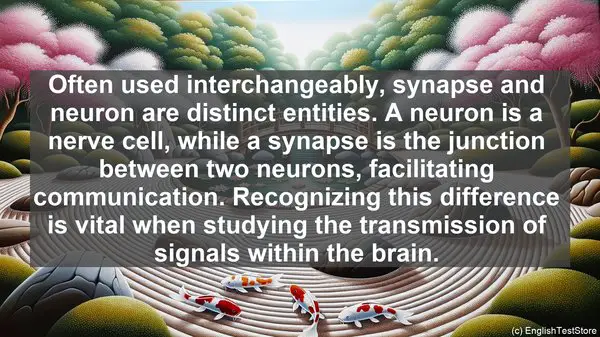Introduction
Welcome to today’s lesson on the top 10 commonly confused words in developmental neurobiology. As you dive deeper into this fascinating field, it’s essential to grasp the nuances of these terms. So, let’s get started!
1. Differentiation vs. Proliferation
Differentiation and proliferation are two fundamental processes in developmental neurobiology. While differentiation refers to the process where cells become specialized, proliferation is the rapid multiplication of cells. Understanding the distinction between these terms is crucial to comprehend the intricate mechanisms of brain development.
2. Synapse vs. Neuron
Often used interchangeably, synapse and neuron are distinct entities. A neuron is a nerve cell, while a synapse is the junction between two neurons, facilitating communication. Recognizing this difference is vital when studying the transmission of signals within the brain.
3. Plasticity vs. Stability
The brain’s ability to change and adapt is referred to as plasticity. On the other hand, stability implies a consistent state. Balancing these two aspects is crucial for optimal brain function and learning. Understanding the delicate interplay between plasticity and stability is essential in developmental neurobiology.
4. Axon vs. Dendrite
Axons and dendrites are integral components of neurons. Axons transmit signals away from the cell body, while dendrites receive signals from other neurons. These distinct functions are vital for the complex network of communication within the brain.
5. Myelination vs. Synaptogenesis
Myelination and synaptogenesis are two processes that occur during brain development. Myelination involves the formation of a protective sheath around nerve fibers, while synaptogenesis is the creation of new synapses. Both processes are crucial for efficient neural communication.
6. Neurogenesis vs. Apoptosis
Neurogenesis is the generation of new neurons, while apoptosis is the programmed cell death. These two processes work hand in hand to shape the developing brain, ensuring the formation of precise neural circuits.
7. Migration vs. Projection
Migration and projection are two processes involved in the positioning of neurons. Migration refers to the movement of neurons from their place of origin, while projection is the process by which neurons extend their axons to specific targets. Both processes are crucial for the establishment of functional brain circuits.
8. Induction vs. Determination
Induction and determination are two events that occur during cell fate determination. Induction refers to the influence of one group of cells on the fate of neighboring cells, while determination is the commitment of a cell to a specific developmental pathway. Understanding these processes is vital for unraveling the intricacies of cell differentiation.

9. Morphogen vs. Growth Factor
Morphogens and growth factors are signaling molecules involved in developmental processes. Morphogens provide positional information, while growth factors regulate cell proliferation and differentiation. Recognizing the distinct roles of these molecules is essential in understanding pattern formation during development.

10. Transcription vs. Translation
Transcription and translation are two essential steps in gene expression. Transcription involves the synthesis of RNA from DNA, while translation is the process by which proteins are synthesized from RNA. These sequential events are crucial for the production of functional proteins, which play diverse roles in the developing brain.
